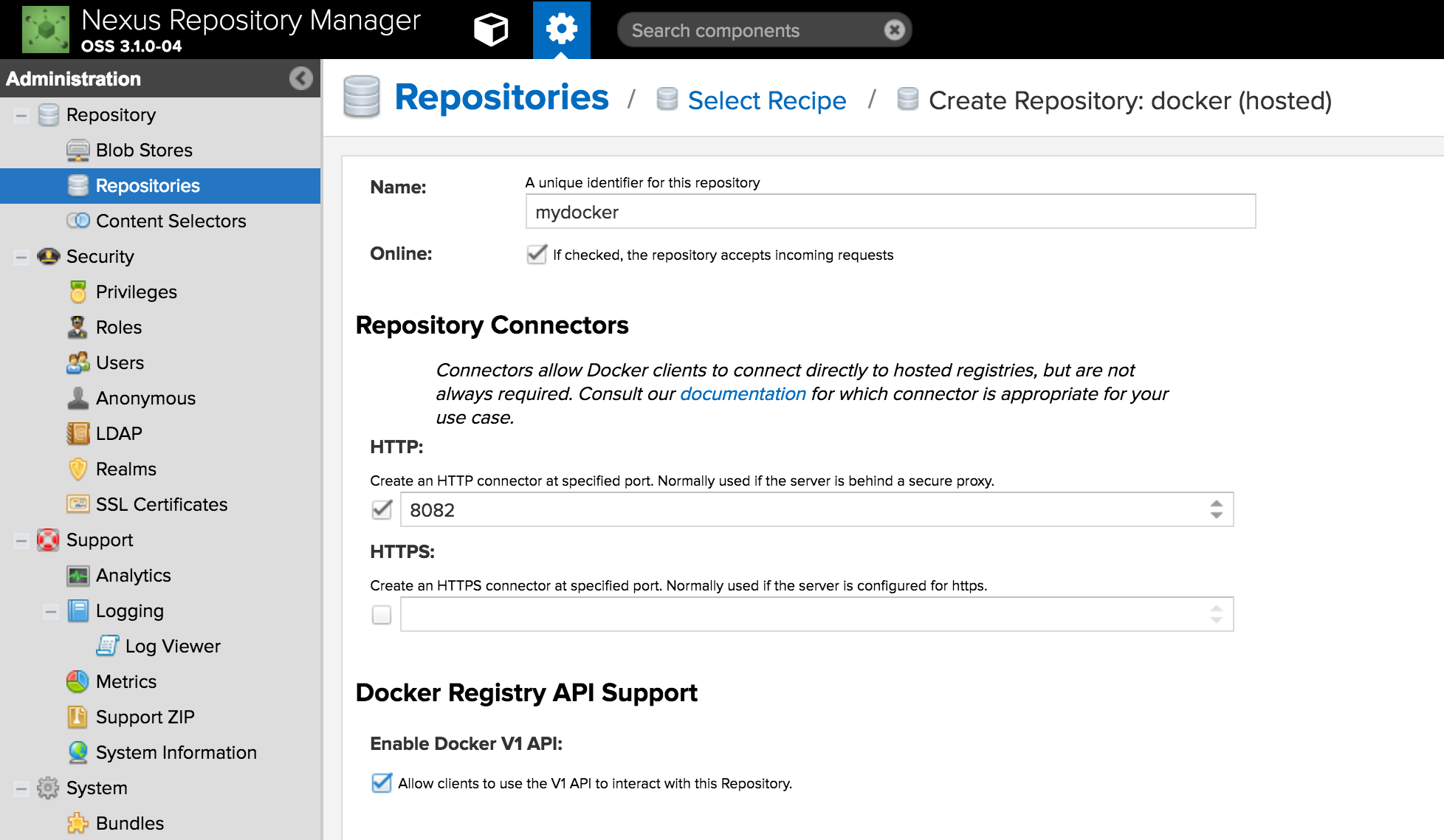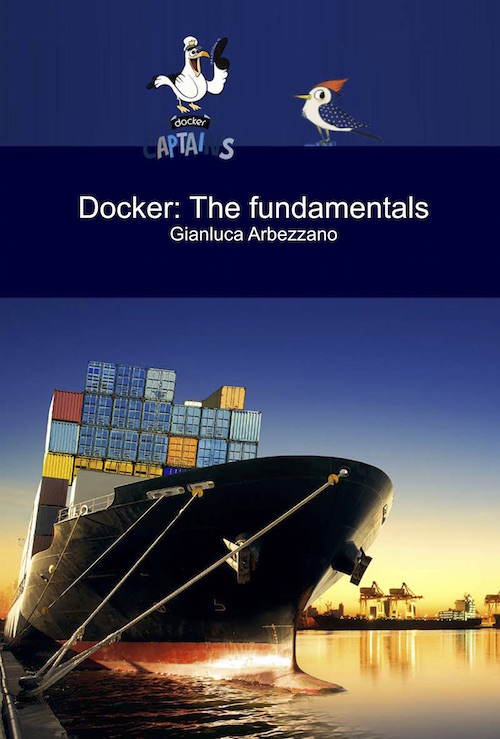Build and Run containers is important but ship them out of your laptop is the best part! The Registry is a very important tool that requires a bit more attention. A Registry is used to store and manage your images and all your layers. You can use a storage to upload and download them across your servers and to share them with your colleagues.
The most popular one is hub.docker.com it contains different kind of images: public, official and private. You can create an account and push your images or build them for example from a github or bitbucket repository. The integration with GitHub and Bitbucket is called “Automated Builds”. it allows you to create a continuous integration environment for your images, when you select “Create” and “Automated Builds” you can specify a repository and a path of your Dockerfile. You can specify more that one path from the same repository to build more that one image tag. In this way you can centralize and build your images every time that a new change is pushed into the repository. It also supports organizations to split your images in different groups and manage visibility of them in case of private images.
By default any developer can push their image to registry and they’ll be public and free for other developers to use. Official images are those public images selected and maintained from specific organization or member of the communities, the idea is that they have a better quality or who provides them are usually involved into the product development. A set of official images are: Nginx, Redis, MySql, PHP, Go and so on https://hub.docker.com/explore.
Docker Hub offers different plan to store private images, all people has one for free but if you need more you can pay a plan and store more.
Registry is not just a tool but it’s a specification, it describe how expose capabilities has pull, push, search and so on. This solution allowed the ecosystem to implement these rules in other projects and save the compatibility with the Docker Client and with the other runtime engine that use this capability. It’s for this reason that other providers as Kubernetes, Cloud Foundry supports download from Docker Hub. This specification has 2 version, v1 and v2 the most famous registries implement both standard and they fallback from v2 to v1 for features that are not supported yet. For example Search is not supported at the moment into the v2 but only in v1.
If you are looking for an In-House solution you have different tools available online. The first one is distribution. It is provided by Docker, it’s open source and offers a very tiny registry that you can start and store in your server. It also supports different storage like the local filesystem and S3. This feature is very interesting because usually the size of the images and the number of layers increase very fast and you also need to keep them safe with backup and redundancy policies for high availability. This is very important if your environment is based on containers it means that your register is a core part of your company. Let’s start a Docker Distribution:
$ docker run -d -p 5000:5000 --name registry registry:2
In docker the default registry is hub.docker.com it means that when we push or pull an image we are reaching this registry:
$ docker pull alpine
To push our images in another registry we need to tag them:
$ docker tag alpine 127.0.0.1:5000/alpine
With this command you tagged the alpine to a registry 127.0.0.1:5000 because as we said in previous chapters the name of the image contains a lot of information:
REGISTRY/NAME:VERSION
The default registry is hub.docker.com a name could be simple as alpine or with a username matt/alpine and you can pin a specific build with a version you can use semver or for example the sha of the commit the default VERSION is latest.
Now that we have a new tag we can push and pull it in from our registry:
$ docker push 127.0.0.1:5000/alpine
$ docker pull 127.0.0.1:5000/alpine
A very important information to remember when you start a customer registry is that every layers, every build is stored and it’s very easy to have a big registry, you need to monitor the instance to be sure that your server has enough disks space and also take care about high availability. In a real environment the registry it the core of your infrastructure, developers use it to pull and push build and also to put a version in production. Take care of your registry.
Other that Docker provided registry there are few alternatives. Nexus is a registry manager that support a lot of languages and packages if you are a Java developer you know it. Nexus supports Docker Registry API v1 and v2. The Docker registry specification is young but it has 2 version already.
We can use the image provided by Sonatype and start our Nexus repository:
$ docker run -d -p 8082:8082 -p 8081:8081 \
-v /tmp/sonata:/sonatype-work --name nexus sonatype/nexus3
$ docker logs -f nexus
When our log tells us that Nexus is ready we can reach the ui from our browser http://localhost:8081/ or with the IP of your Docker Machine if you are using Docker for Mac/Windows or Docker in Linux. The default credentials are username admin and password admin123.

First of all we need to create a new Hosted Repository for Docker, we need to press the Settings Icon top left of the page, Repositories and Create Repository. I called mine mydocker and you need to specify an HTTP port for that repository, we shared port 8082 during the run and for this reason I chose 8082.

Nexus has different kind of repositories Host means that it’s self hosted but you can also create a Proxy Repository to proxy for example the official Docker Hub. Now we need to login to out docker registry:
$ docker login 127.0.0.1:8082
Now we can tag an alpine and push the tag into the repository
$ docker tag alpine 127.0.0.1:8082/alpine
$ docker push 127.0.0.1:8082/alpine
You can go in Assets click on mydocker repository and see that your image is correctly stored.
GitLab has also a container registry. GitLab uses it to manage build and it’s available for you from version 8.8 if you are already using this tool.
Thanks Kishore Yekkanti, Giulio De Donato for your review.
get "Docker the Fundamentals" by. Drive your boat as a Captain
You can get the Chapter 2 of the book "Drive your boat as a Captain" just leave click on the cover and leave your email to receive a free copy.
This chapter is getting started with Docker Engine and the basic concept around registry, pull, push and so on. It's a good way to start from zero with Docker.
